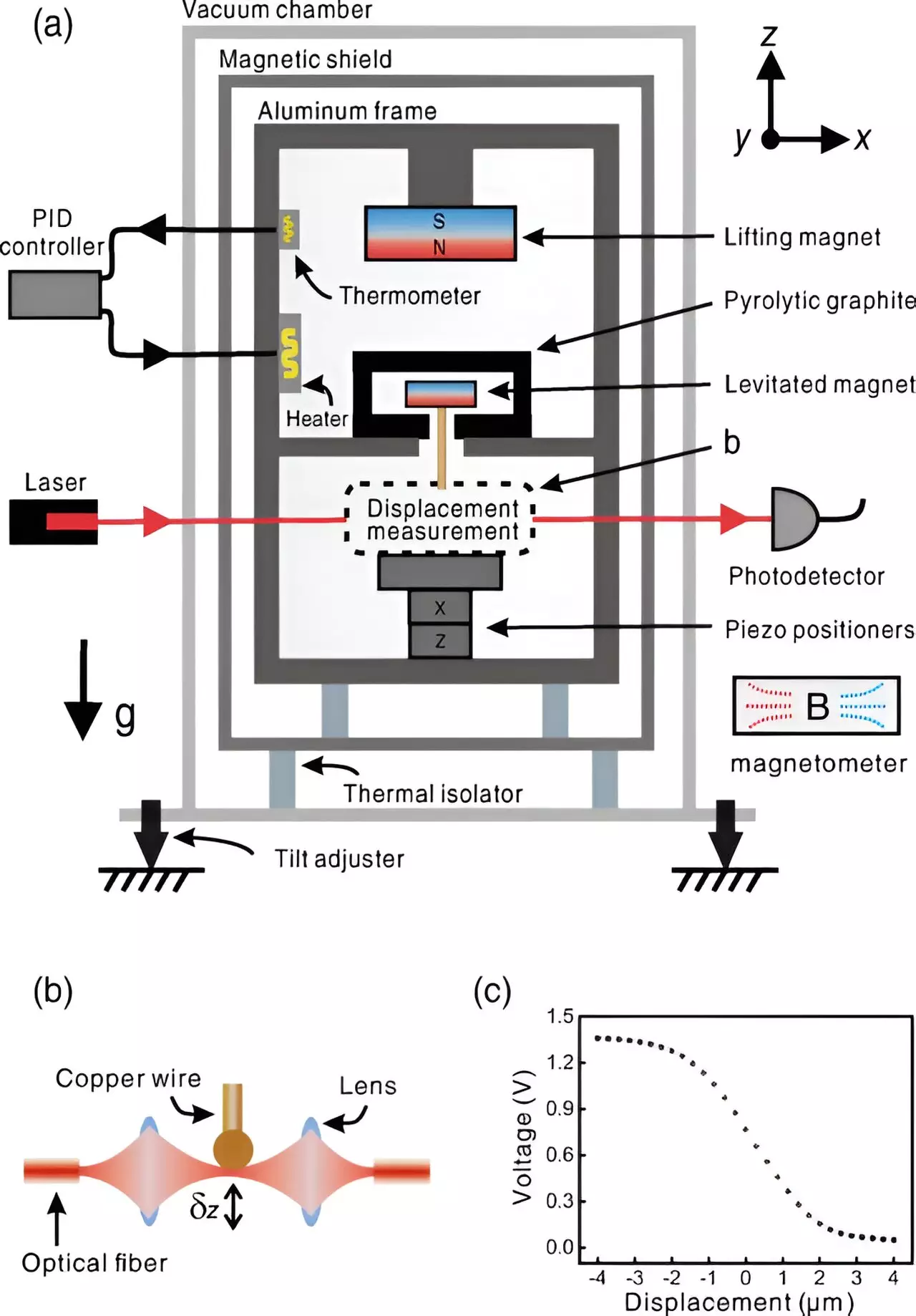In a recent study published in the journal Physical Review Letters, a team of physicists and engineers from China introduced a new type of gravimeter that offers high sensitivity and stability at room temperature. Traditionally, gravity measurement devices have had limitations, such as aging quickly or requiring cold containers, making them inefficient and difficult to use.
The novel approach adopted by the research team involved the use of dual magnets within the device. By placing a large magnet inside a cabinet with a smaller magnet beneath it, both enclosed in a field-repelling graphite shell, a levitation effect was achieved. This setup allowed for vertical oscillations, which could be adjusted by controlling the distance between the magnets to just 1 Hz. Additionally, a wire was incorporated, hanging down from the larger magnet, to measure changes in gravitational pull. A vertical laser was then used to detect variations in intensity as the wire obstructed its path, enabling the calculation of gravitational forces acting on the device.
To test the efficiency of the new gravimeter, the team subjected it to rigorous trials in a vacuum chamber over an extended period. Following this settling period, measurements of gravity were taken from both the moon and sun for five consecutive days. A comparison with predicted values revealed oscillations reflecting variations in gravitational acceleration of up to approximately 10−7 of the standard value, demonstrating remarkable accuracy in the device’s readings. The researchers view this device as a proof-of-concept and anticipate further refinements to enhance its precision and durability for future applications.
Looking ahead, the team plans to explore ways to strengthen the device physically, making it more resilient for relocation between different sites. This improvement aims to address one of the common drawbacks in existing gravimeters, enabling enhanced portability and versatility in gravitational measurements. Moreover, continued research and development efforts are expected to yield advancements in the design and operation of gravimeters, opening up new possibilities for precise gravity detection in various scientific and industrial settings.


Leave a Reply